OSTOLAZAE Pino, Alcalá & Marquiegui, 2021
Series Racemosae
Type : Pino, Alcalá & Marquiegui 3269, Peru, dept. Huancavelica, prov. Castrovirreyna, distr. Tantará, 2708 m, Jan 19, 2021.
Etymology : Named for its discoverer Carlos Ostolaza
Distribution : Peru : Dept. Huancavelica, prov. Castrovirreyna, abundant in distr. Tantará, Aurahuá and Arma.
Description:
A succulent glabrous, solitary herb, very rarely forming clusters.
Stem semiburied to aerial, thick, erect, conspicuous, up to 20 cm long, (1–) 1.5–3 (–4) cm diam., annularly constricted with scars of fallen leaves and inflorescences, light greyish brown when exposed.
Rosettes terminal, (8–) 12–20 (–35) cm diam.
Leaves in young plants 6-8, obovate, subacute-mucronate, upper side slightly concave to faceted 2 mm near blunt margins, lower side subcarinate, bright dark green; in mature plants (10–) 12–16 (–18) leaves, the peripheral ones narrowly obovate to suboblong, incurved or recurved from distal half, central ones slightly rhombic and incurved, sessile, (5–) 8–14 (–20) cm long, (1–) 1.2–1.6 (–2) cm wide at base, 1.5–2 (–4) cm wide at proximal third, 2.2–3.2 (–4.5) cm wide at middle, (1.6–) 2–3.4 (–4.8) cm wide at distal third, 3–6 mm thick, upper side concave to canaliculate, central nerve depressed, apex subacute or acute with a 1.5 x 2.5 mm mucro, in the dry period lilac, in the rainy period bright dark green, lighter in colour, sometimes with a light reddish/brownish hue in distal half or near margins and keel, base hyaline, lighter in colour.
Flowering stem 1–2 erect racemes, dry scapes persistent, rachis (20–) 30–50 (–70) cm long, 1–1.2 cm diam. at base, tapering to 2–2.5 mm diam. at apex, light green, slightly reddish in full sun, terete or slightly sulcate due to decurrent pedicels.
Peduncular bracts 16–26, spaced evenly 1.5–3 cm along the stem, sometimes paired at the base, larger at proximal half, spreading at 45º, slightly recurved, oblong to narrowly obovate or ovate, 2–4.5 cm long, 0.5–1.4 cm wide, 3.5–4 mm thick, upper side flat to convex or subcanaliculate, lower side convex, both sides same color as leaves, tips acute to mucronate, sometimes reddish, base hyaline.
Flowers (10–) 13–22 (–28), appearing from February to April, crowded at distal half of the scape, 1.2–1.8 cm long and 7–8 mm diam. Pedicels erect or in acute angle to the axis, 0.5–2 cm long, 1–1.5 mm diam., slightly redder than flowering stem, with a small 1–2 cm long, 2.5–4 mm wide bracteole at base, lanceolate, incurved. Calyx lobes united at base, sepals unequal, oblong to very narrowly ovate acute, spreading at 45–90º, both sides convex, 7–12 mm long, 2–2.5 mm wide, light green. Corolla subpentagonal, 1.1–1.7 cm long, 7–8 mm diam. along all its length. Petals narrowly oblong, acute, 0.9–1.4 cm long, 3–4 mm wide, light red to salmon orange, apex markedly recurving, inner surface red 1 mm near margins and distal end, yellowish at the middle. Stamens 10, the 5 epipetalous 7–8 mm long, the antesepalous 10–11 mm long, filaments cream, 0.7–1 mm thick at base, gradually tapering to 0.3 mm. Anthers ovate, yellow, 1.5–2 mm long and 0.8–1 mm wide.
First described in CSJ US 93(4) : 293-298. 2021.
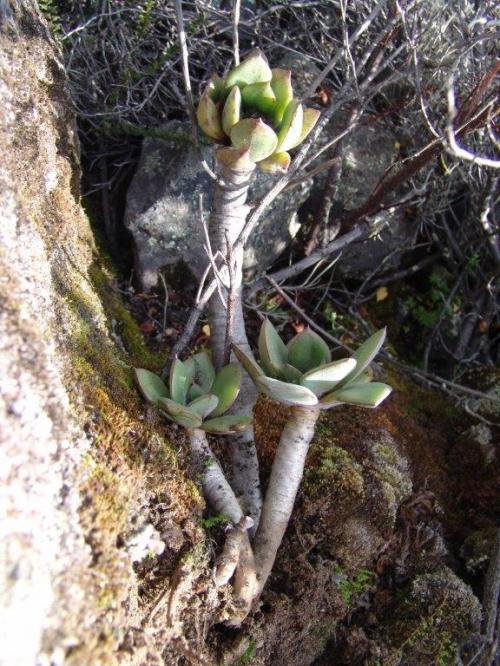
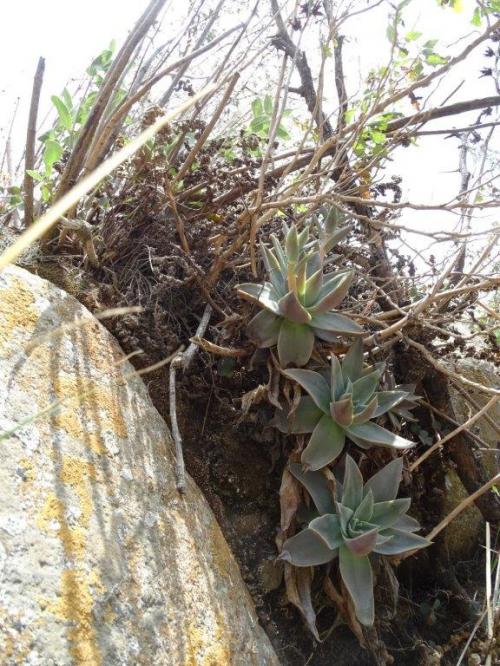
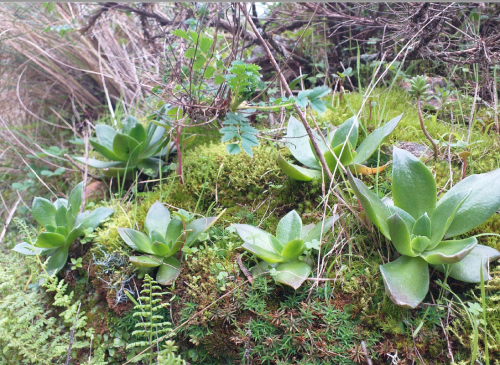
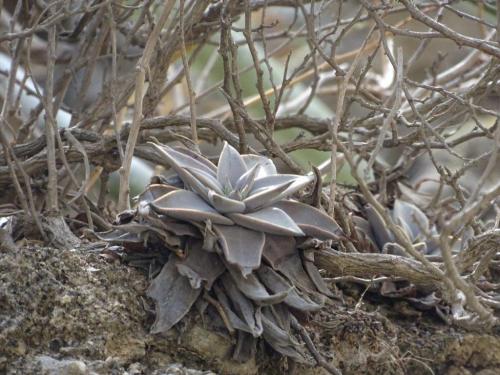
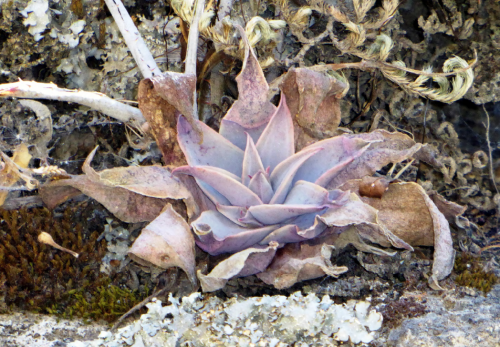
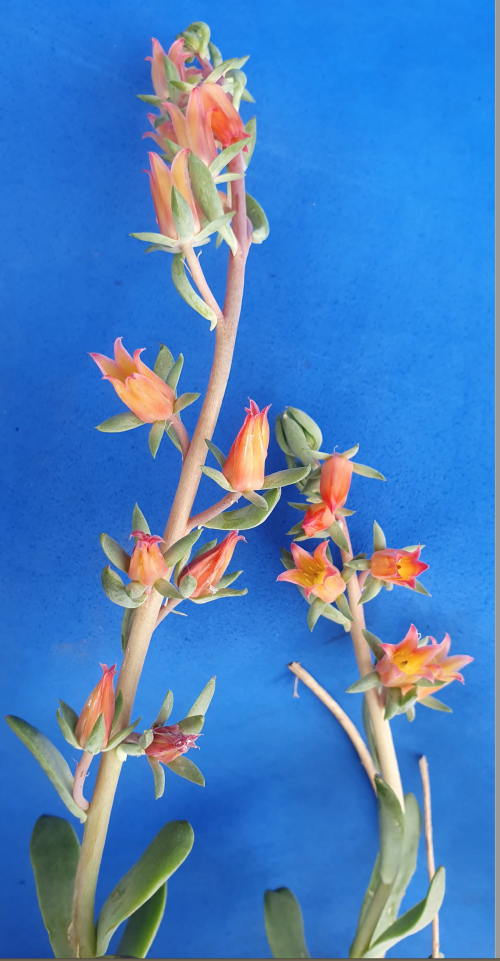
Photos Guillermo Pino